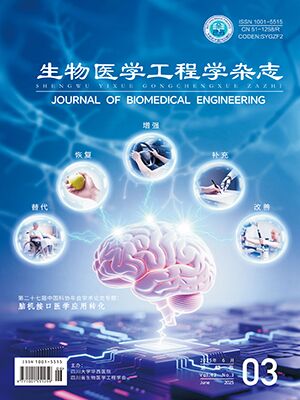Coronavirus disease 2019 (COVID-19) has spread rapidly around the world. In order to diagnose COVID-19 more quickly, in this paper, a depthwise separable DenseNet was proposed. The paper constructed a deep learning model with 2 905 chest X-ray images as experimental dataset. In order to enhance the contrast, the contrast limited adaptive histogram equalization (CLAHE) algorithm was used to preprocess the X-ray image before network training, then the images were put into the training network and the parameters of the network were adjusted to the optimal. Meanwhile, Leaky ReLU was selected as the activation function. VGG16, ResNet18, ResNet34, DenseNet121 and SDenseNet models were used to compare with the model proposed in this paper. Compared with ResNet34, the proposed classification model of pneumonia had improved 2.0%, 2.3% and 1.5% in accuracy, sensitivity and specificity respectively. Compared with the SDenseNet network without depthwise separable convolution, number of parameters of the proposed model was reduced by 43.9%, but the classification effect did not decrease. It can be found that the proposed DWSDenseNet has a good classification effect on the COVID-19 chest X-ray images dataset. Under the condition of ensuring the accuracy as much as possible, the depthwise separable convolution can effectively reduce number of parameters of the model.
Citation: FENG Yibo, QIU Dawei, CAO Hui, ZHANG Junzhong, XIN Zaihai, LIU Jing. Research on coronavirus disease 2019 (COVID-19) detection method based on depthwise separable DenseNet in chest X-ray images. Journal of Biomedical Engineering, 2020, 37(4): 557-565. doi: 10.7507/1001-5515.202005056 Copy
Copyright © the editorial department of Journal of Biomedical Engineering of West China Medical Publisher. All rights reserved




